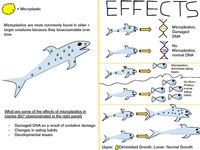
Photo from wikipedia
Release of fish bred in aquaculture into the ocean to enhance marine fisheries has expanded rapidly over the last 20 years, driven by declining fish stocks in Asia and increasing… Click to show full abstract
Release of fish bred in aquaculture into the ocean to enhance marine fisheries has expanded rapidly over the last 20 years, driven by declining fish stocks in Asia and increasing recreational fishing pressure in western countries. Significant advances in release programs include a solid conceptual foundation, guiding principles to minimise environmental impacts and to maximise fisheries outcomes. Major ecological questions that determine the appropriateness of releases include: Is the population recruitment limited? Will the scale of release exceed the environmental carrying capacity? Will the release have negative impacts (e.g., disease) on the wild population or ecosystem? In a global context, the scale of releases in Australia is small (millions of released individuals each year), especially compared with those in China and Japan (billions released). Australian releases focus on small-scale, highly-targeted releases in direct response to recruitment limitation. Programs for the Eastern King Prawn and Western School Prawn both tested prawns for disease before release. Additionally, these programs have determined the best release sites, times and densities to reduce the chance of negative effects of high-density releases, such as slower growth and higher predation rates (“more fish in = less out”). Results from the Eastern King Prawn program and those from a program for Black Bream in the Blackwood River Estuary show that the released prawns and fish contributed significantly to fisheries stocks and that the Black Bream also contributed to the spawning population. These release programs, which were informed by ecological research and quantitative modelling, have demonstrated that “more fish in can mean more fish out” and highlight the value of monitoring, evaluating, and adaptively managing releases to maximise their potential benefits. Management policies in Western Australia and New South Wales, combined with Environmental Impact Assessment such as that required in NSW, provide a mechanism for fostering responsible release programs.
Journal Title: Austral Ecology
Year Published: 2019
Link to full text (if available)
Share on Social Media: Sign Up to like & get
recommendations!